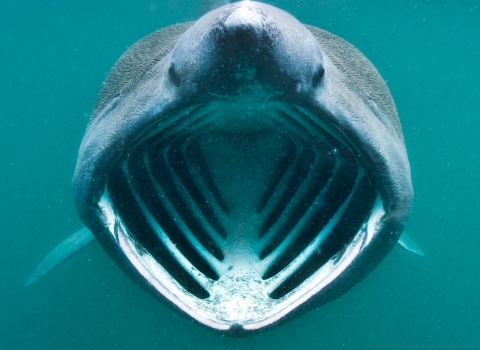People come to me and say, 'What'll I do if I go in the water and see a shark?' You don't have to do anything. The chances of that shark attacking you in any way is so remote. The sea should be enjoyed, the animals in it. When you see a shark underwater, you should say, 'How lucky I am to see this beautiful animal in his environment!'
For a long time, sharks have been misunderstood and vilified. Even today sensationalist media stories play on the 'Jaws' stereotype to sell stories. Despite this, much work has been done in the conservation and scientific communities to understand these amazing animals better, and to change public opinion. We now know that sharks are one of the most vulnerable animals in our ocean.
We are constantly amazed by the huge diversity of sharks that are found around the world, and here in our local seas. For some species, our local waters are their home all year-round, for others, they are passing through as they cover hundreds of miles in a year. You can learn more about our local species on our shark guide.
Today we're lucky to have a large (and ever-growing) group of passionate shark supporters from around the world participating in our tagging programme, and searching the shoreline for shark egg cases. Together we continue to champion sharks, skates, and rays safeguarding their future in our local seas.
Why is a world without sharks scary?
Sharks are important for keeping the ecosystem of the ocean healthy – they act as an indicator of the ocean’s health by eating all the old and ill fish! This keeps the population healthy and will prevent any diseased fish from getting captured and used in the food industry.
They also fill the top predator role and with this role comes the responsibility of balancing the ecosystem! The removal of sharks would have serious consequences for the structure and function of marine food webs. If sharks are removed the mid-level predator numbers increase which then leads to a reduction in bottom-level primary producing organisms – these bottom level organisms are needed for the health and productivity of the ocean. At absolute extremes, the removal of sharks from the ecosystem would lead to species extinction.
Sharks can often be of high economic importance in some countries through ecotourism! Countries that have a high shark population can highlight particular areas that offer the chance to see a shark in the wild, some areas can even offer dives! In the Bahamas, a reef shark is worth roughly $50-$100 to a fisherman or could be worth $250,000 as a result of dive tourism.
What are the threats to sharks?
- Fishing. Large species of shark, skates, and rays, often get caught in commercial trawling and fishing nets. For some large species such as the Flapper Skate, their egg cases are large also, meaning even the egg cases and newly hatched pups are at risk of getting caught.
- Climate Change. Rising ocean temperatures will lead to changes in shark migration and feeding patterns, affecting breeding areas and causing changes in the food web. Increasing ocean acidity will corrode the skin of sharks, causing them to be slower and louder in the water which may affect their level of food intake.
- Busy Inshore Areas. Instead of producing live young some species will produce eggs that are normally laid in shallower waters. Unfortunately these areas are often the busiest due to activities such as fishing and construction, these areas are more likely to be affected by pollution from land run-off.
Why are sharks vulnerable in our seas?
Biological Factors. Their long life-span, high age of sexual maturity and low reproductive rates make it very difficult for their population numbers to recover when a large number are removed.
For example, Spurdog are a long-lived species, living for about 70 years. Female Spurdog don't reproduce until they are 15 years old. That means that they have to survive 15 years without being damaged. The gestation period for Spurdog is 2 years, so a female Spurdog is pregnant for 2 years before her pups are born, which is a long time to avoid fishing nets, discarded gear, and other predators. When they do reproduce they will have a small litter of 2-3 pups, and then take 'resting years' in between having more pups. All of these factors together mean that it can take a long time for a Spurdog population to grow to healthy numbers.
A combination of these biological factors means that sharks, skates and rays are more likely to be captured before ever reproducing.
Why is Northern Ireland a fundamental location for conservation efforts?
Northern Ireland has a real UK significance when it comes to biodiversity! We are one of the most geographically diverse areas on the planet with approximately 400 miles of coastline being home to over half of all Northern Ireland’s biodiversity.
Our local seas are home to a diverse range of sharks, skates, and rays, including the largest skate in the world - the Flapper Skate, making our coastline an important area for shark conservation efforts. We also provide refuge for many species’ that pass by on their annual migrations, including the Thresher shark. This species travels around Northern Ireland when the ocean temperatures are warmer during the summer months.
An effective tool to conserve biodiversity is through the designation of special sites that will protect habitats and species. These sites map out areas that are refuges or important habitats for wildlife. However, for the site to effectively protect sharks, skates, and rays, it has to be in the appropriate location. Using the data collected from both our tagging and egg case hunts we are working to identify important areas that would protect our endangered sharks.

